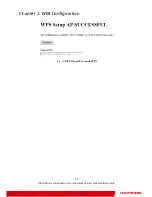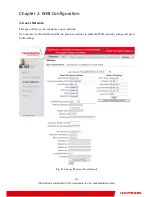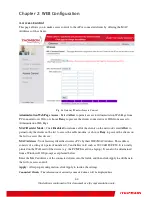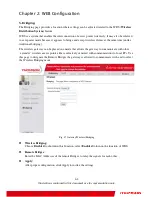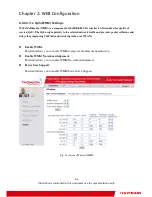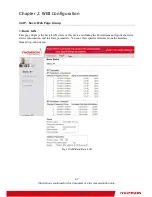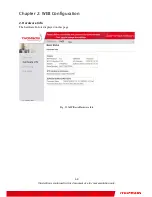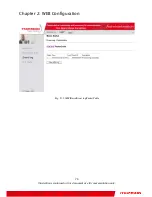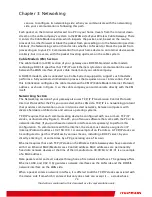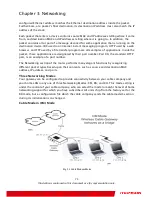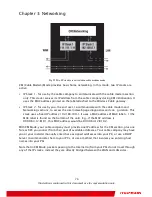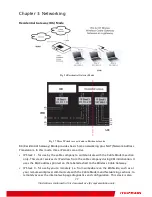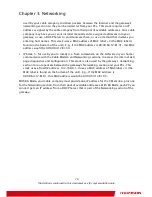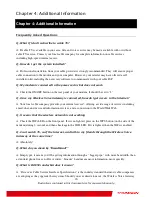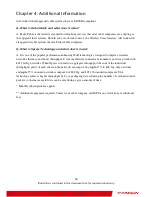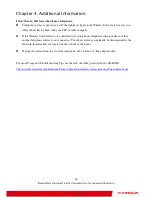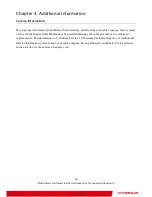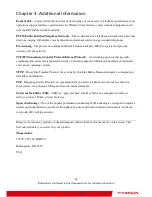
Chapter 3: Networking
Illustrations contained in this document are for representation only.
75
configured Ethernet address matches the Ethernet destination address inside the packet.
Furthermore, at a packet’s final destination, its destination IP address must also match the IP
address of the stack.
Each packet that enters a device contains source MAC and IP addresses telling where it came
from, and destination MAC and IP addresses telling where it is going to. In addition, the
packet contains all or part of a message destined for some application that is running on the
destination device. IRC used in an Internet instant messaging program, HTTP used by a web
browser, and FTP used by a file transfer program are all examples of applications. Inside the
packet, these applications are designated by their port number. Port 80, the standard HTTP
port, is an example of a port number.
The Networking section of the router performs many elegant functions by recognizing
different packet types based upon their contents, such as source and destination MAC
address, IP address, and ports.
Three Networking Modes
Your gateway can be configured to provide connectivity between your cable company and
your home LAN in any one of three Networking Modes: CM, RG, and CH. This mode setting is
under the control of your cable company, who can select the mode to match the level of home
networking support for which you have subscribed. All units ship from the factory set for the
RG mode, but a configuration file which the cable company sends the cable modem section
during its initialization can change it.
Cable Modem (CM) Mode
Fig. 54 Cable Modem Mode


